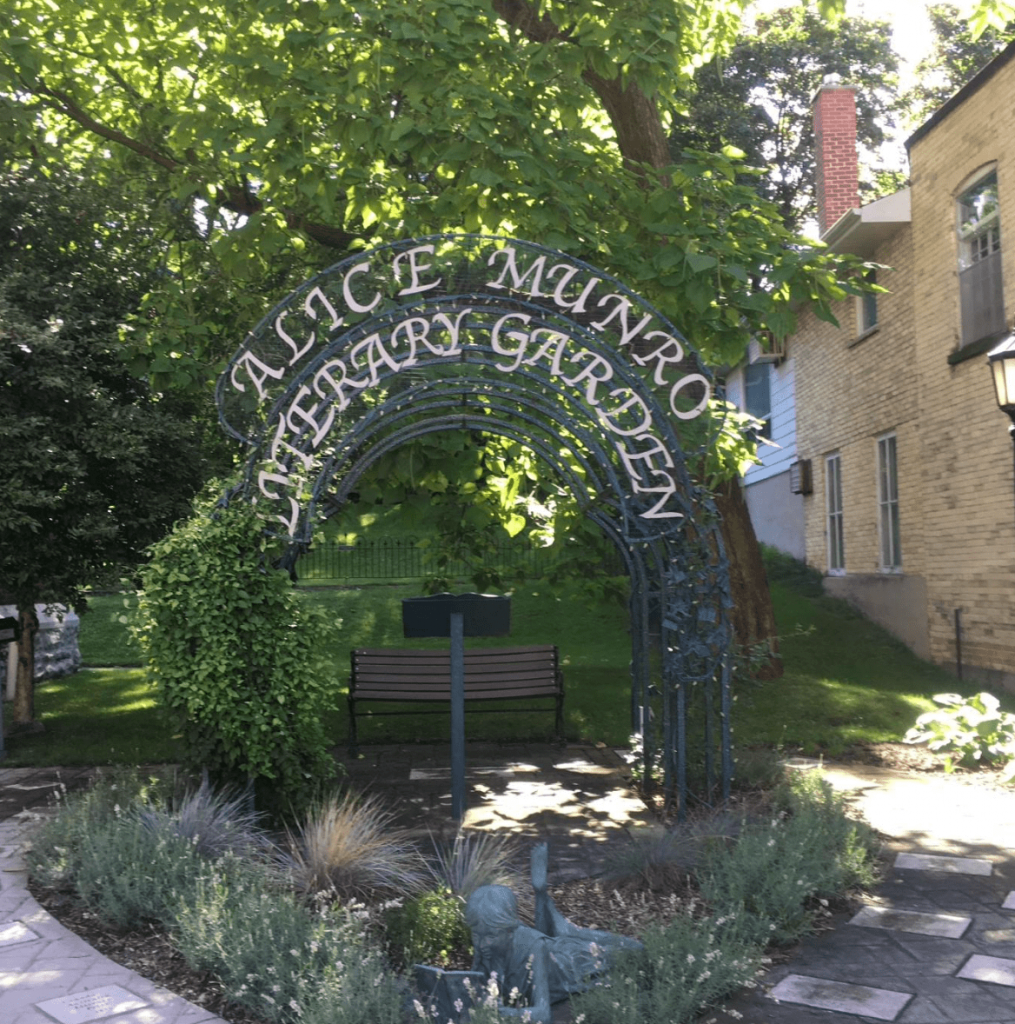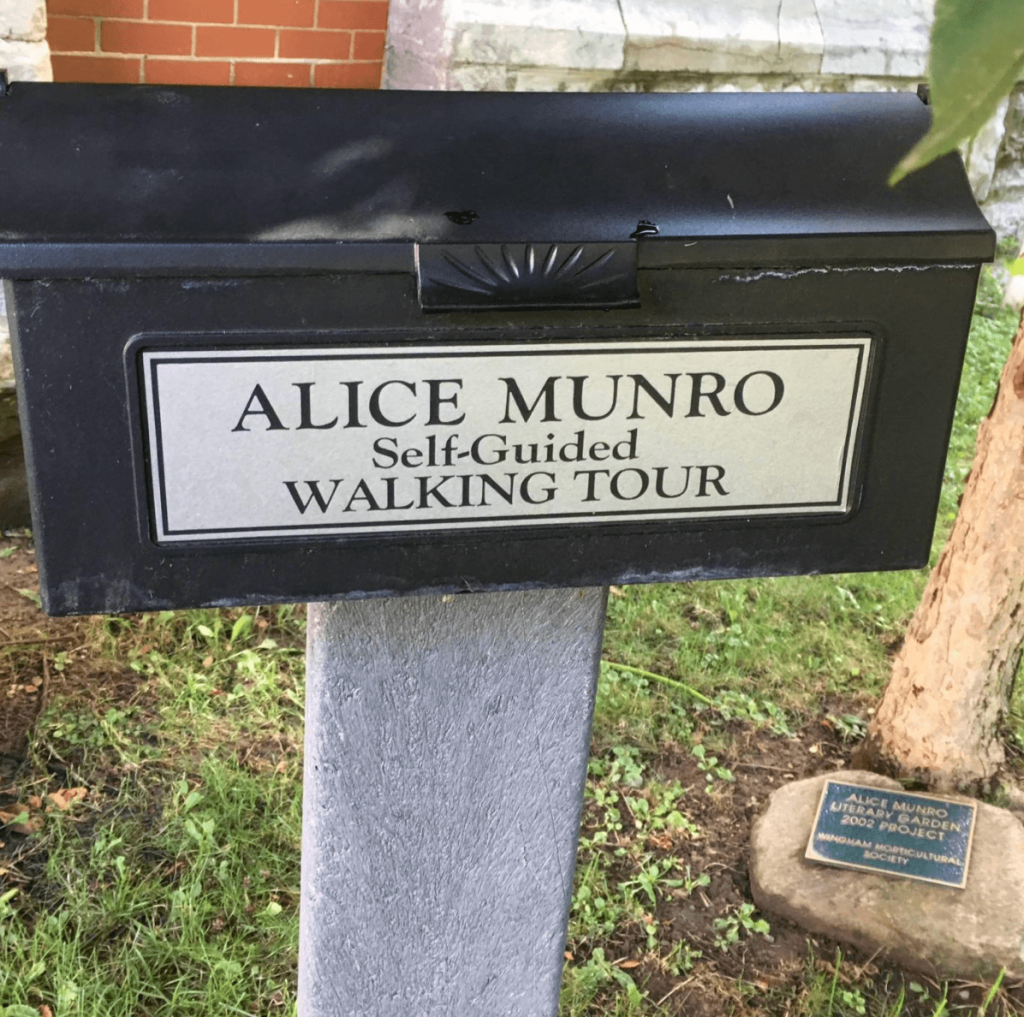Finding Saint Munro
When I first picked up an Alice Munro story collection in 2015, I did not expect the stories about lives of girls and women in rural Ontario to acquire such hold over me. Initially I found her stories complicated. I had not been schooled in her artful ways then. I wondered why they meandered, digressed, took time to come to the ‘main point.’
But when the truth at the story’s core exploded in my face, every time I needed to put the book down. And sit stunned. After letting the waves wash over me, I would call my friend, another Munro fiend to discuss. How on earth did she do that? No one has ever put it like that. ‘It’ could be anything – the feel of a blood-soaked pad between a young girl’s legs, the smell and sensation of heavy menses, the way a ‘doting’ husband puts the wife in place even as he enacts perfect love, the slander that holds sway over small towns and small lives, the hatred a daughter feels for a mother, the artful pauses that give people away, the long silences etched between words.
Over the past decade, I have read every story from her fourteen story collections. After dissecting, discussing, rereading her stories, I can call myself not just an ordinary fan, but a worshipper of Saint Munro. Considering, I am a translator, who advocates reading more translated Indian fiction, my Alice Munro adoration can be considered a digression. An imitation worship of a western goddess.
I don’t think so. Her stories are great because in their attention to particularity, in capturing the constrained lives of women and girls in semi-rural Canada, she captures the fabric of sex, blood, hate that makes women’s lives everywhere. Not by sensationalising them but by stripping off layers till the stories become life itself. When she writes of the impossible desires in women’s lives bleached by the dailiness of scrubbing, cooking and caring for clamouring babies; when she shows women hankering for escape, for a city beau, wealth, a life of well-meaning deceit and spurious glamour, she could well be speaking of a woman of small-town Uttar Pradesh. No one has excavated the feminine heart with such depth and diligence as her. In her books women tread paths not of their choosing, but paths they escape into, only to find themselves locked into circumstances they hate. Every story has a story beneath it, paths diverge, only to loop and come together again, lending light to what happened and what might have been.
Also read: The Difficulties of Remembering Alice Munro
When I visited Toronto in 2018, I made a pilgrimage to Wingham, the town she grew up in. Wingham, 90 miles out of Toronto, lay deep in the Amish countryside. From time to time, the car had to pause to give way to horse-carts driven by men in top-hats, their bonneted women seated behind grey gowns. A pastoral calm stretched on both sides of the road – rolling acres of rich green against a fleeced blue sky, fenced grasslands lit up with gorse and honeysuckle, where cows, horses, sheep grazed.

Photo: Varsha Tiwary.
Two hours later, I arrived in Wingham, an impossibly quiet little place at noon. Google said that the Alice Munro Literary Garden, a garden made in her honour, after she won the Nobel Prize, was next to the post office. On my way there, I passed by a Salvation Army thrift shop on Josephine Street, where quaint old ladies in flowered hats, whiskered Amish men and bonneted women, thronged. Munro Literary Garden. This main street mostly had shops selling secondhand clothes and used household goods.
The eponymous garden that I had come to see, was just a tiny handkerchief of greenery with signage above a wooden bench. Names of all Munro’s books and prizes won were engraved on cement plaques on walkway.
In India, putting names of revered books on ground – waiting to be trampled beneath feet would be blasphemy. So I gingerly step around them. The Huron County Museum, next door to the tiny garden, is shut indefinitely. Faded flyers of a self-guided literary tour are still stuffed in a mailbox hung outside.
I walk out in less than 10 minutes. The few people around on the main street – a purple haired girl in shorts, walking with a polio limp; a slack-jawed derelict with sideways lope, two young housewives debating whether to buy a second-hand kitchen utensil, made me recognise with a start, the time-warped feeling that Munro’s stories evoke.

Photo: Varsha Tiwary.
I walked in one of the secondhand shops on the main street, which among other things, also sold books. Thrillers and romances by Clive Cussler, Maeve Binchey were on display. Also, Amish romances.
"No, don’nn think I have any by Alice Munro. Who is she? Some new wrrirer?"
The assistant in the Alice Munro Library on the next street was helpful. She told me the way to the house Alice Munro grew up in. “An old man lives there now. Go to the Lower Town and take a road.” She cannot remember the road’s name, “but it is the only road that leads to a dead end and it goes through corn fields.”
I tried. But it was not possible to locate the house. The one or two people I found on the way had no idea about "Alice Munro lady."
I was filled with a strange sense of revelation.
Writing like Munro was about a lifetime spent in shunning the false and the clever, a lifetime spent observing life. To be able to see a lot, you needed to hide yourself. You never sought claps and pats. When Vancouver Sun called her a "housewife who writes short stories" she simply went on to write more, eventually becoming the only short story writer awarded a Nobel Prize. When someone else said she should write novels, she confessed the constraints of being a housewife. “I was a housewife, so I learned to write in times off, and I don't think I ever gave it up, though there were times when I was very discouraged because I began to see that the stories I was writing were not very good, that I had a lot to learn, and that it was a much, much harder job than I had expected.”
Such self-deprecation can come only from a goddess of literature.
I did not find Alice Munro’s house.
But in time-warped Wingham, I discovered why the streets felt like they had stepped out of her stories. To bring out the essence of life to page, cherishing contact with the ordinary was a prerequisite. Wingham itself was a place that avoided noise of the world, abhorred focus on the self. Just like its world-famous writer the town did not seem to know.
Based in Delhi, Varsha Tiwary works as an auditor, and translates between Hindi and English. She also writes short stories and essays, which have appeared in The Bombay Literary Magazine, among others.
This article went live on May fifteenth, two thousand twenty four, at zero minutes past seven in the evening.The Wire is now on WhatsApp. Follow our channel for sharp analysis and opinions on the latest developments.




